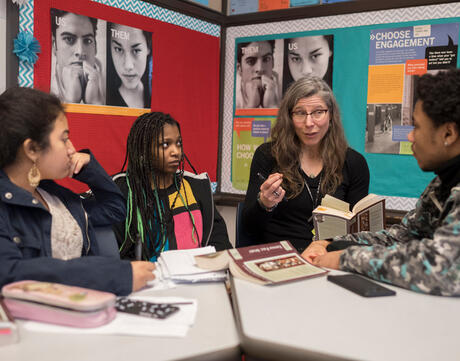
The Poetry of Home
Duration
One 50-min class periodSubject
- English & Language Arts
Grade
11–12Language
English — USPublished
Get it in Google Drive!
Get everything you need including content from this page
Get it in Google Drive!
Get everything you need including content from this page
Overview
About This Lesson
Reading literature that illustrates a nuanced sense of belonging to a place can be a window into the lives of others. It allows us to witness our shared humanity and visualize our potential for connection.
This lesson turns to the power of poetry to explore experiences of home. While each poem is distinctly rooted in a specific location, all three are universal in their expressions of familiarity and belonging. As these poems are shared aloud, students are invited to immerse themselves in the listening experience, reflecting on the personal reactions and emotions these words evoke and their own notions of home. Through small-group discussions and analyses, students will not only deepen their comprehension of the poems’ messages but also connect these insights to the unit’s guiding questions about the essence and experience of “home.”
Lesson Materials
- Reading: “Transubstantiation” Molly McCully Brown
- Reading: “west of philly” by Yolanda Wisher
- Reading: “Suburban” by Michael Blumenthal
- Audio: “Transubstantiation” Molly McCully Brown
- Audio: “west of philly” by Yolanda Wisher
Essential Questions
- How can reimagining “home” empower us to define how and where we belong in the world?
Guiding Questions
- In what ways can familiarity with the places we live cultivate a sense of connection and belonging?
- How can literature deepen, extend, and complicate our thinking about place?
Facing History Learning Outcomes
- Evaluate a text for the ways in which it upholds and/or challenges stereotypes of individuals and groups.
Preparing to Teach
A Note to Teachers
Before teaching this lesson, please review the following information to help guide your preparation process.
Lesson Plans
Activities
Extension Activities
Unlimited Access to Learning. More Added Every Month.
Facing History & Ourselves is designed for educators who want to help students explore identity, think critically, grow emotionally, act ethically, and participate in civic life. It’s hard work, so we’ve developed some go-to professional learning opportunities to help you along the way.
Exploring ELA Text Selection with Julia Torres
On-Demand

Working for Justice, Equity and Civic Agency in Our Schools: A Conversation with Clint Smith
On-Demand

Centering Student Voices to Build Community and Agency
On-Demand













